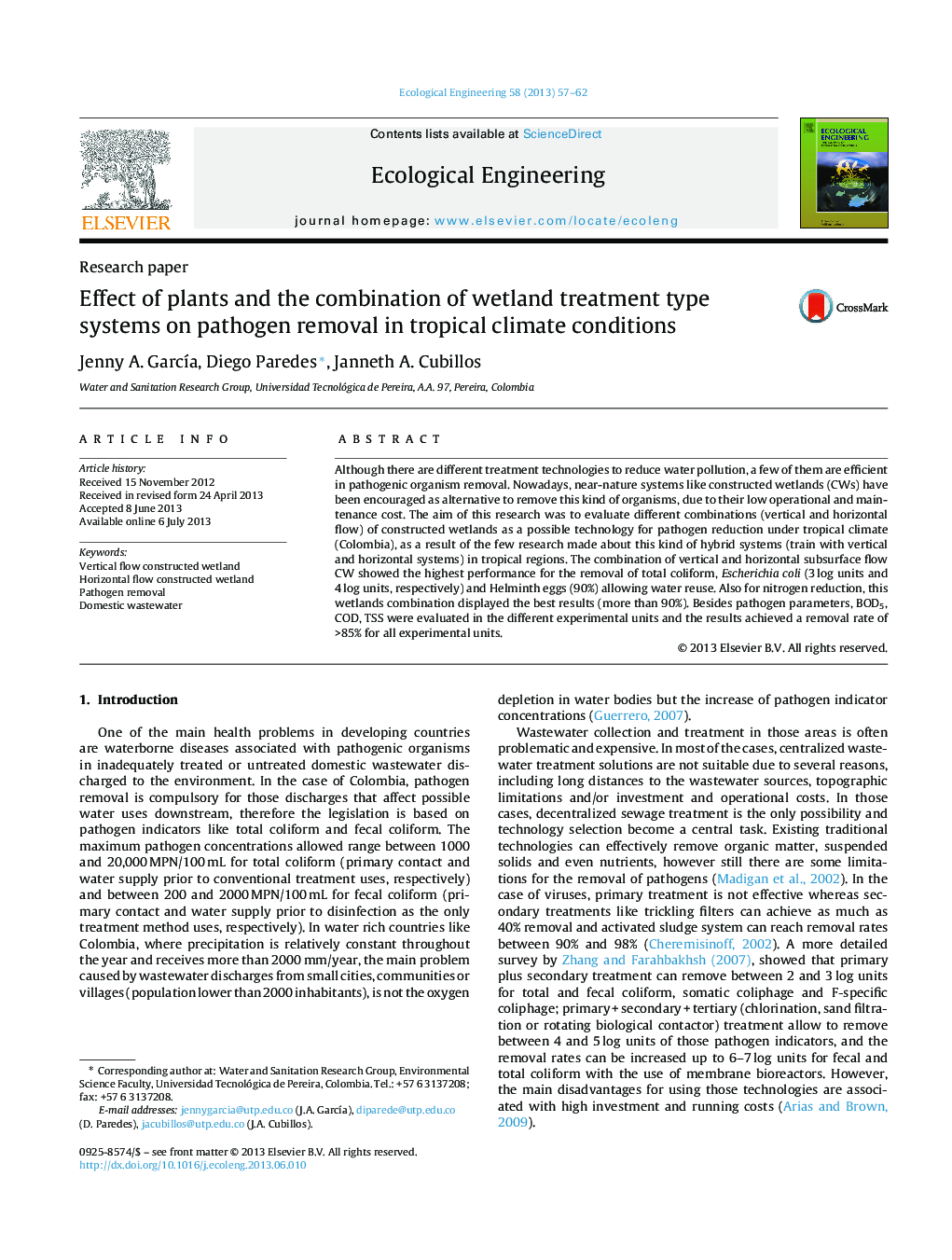| Article ID | Journal | Published Year | Pages | File Type |
|---|---|---|---|---|
| 6302473 | Ecological Engineering | 2013 | 6 Pages |
Abstract
Although there are different treatment technologies to reduce water pollution, a few of them are efficient in pathogenic organism removal. Nowadays, near-nature systems like constructed wetlands (CWs) have been encouraged as alternative to remove this kind of organisms, due to their low operational and maintenance cost. The aim of this research was to evaluate different combinations (vertical and horizontal flow) of constructed wetlands as a possible technology for pathogen reduction under tropical climate (Colombia), as a result of the few research made about this kind of hybrid systems (train with vertical and horizontal systems) in tropical regions. The combination of vertical and horizontal subsurface flow CW showed the highest performance for the removal of total coliform, Escherichia coli (3Â log units and 4Â log units, respectively) and Helminth eggs (90%) allowing water reuse. Also for nitrogen reduction, this wetlands combination displayed the best results (more than 90%). Besides pathogen parameters, BOD5, COD, TSS were evaluated in the different experimental units and the results achieved a removal rate of >85% for all experimental units.
Keywords
Related Topics
Life Sciences
Agricultural and Biological Sciences
Ecology, Evolution, Behavior and Systematics
Authors
Jenny A. GarcÃa, Diego Paredes, Janneth A. Cubillos,
